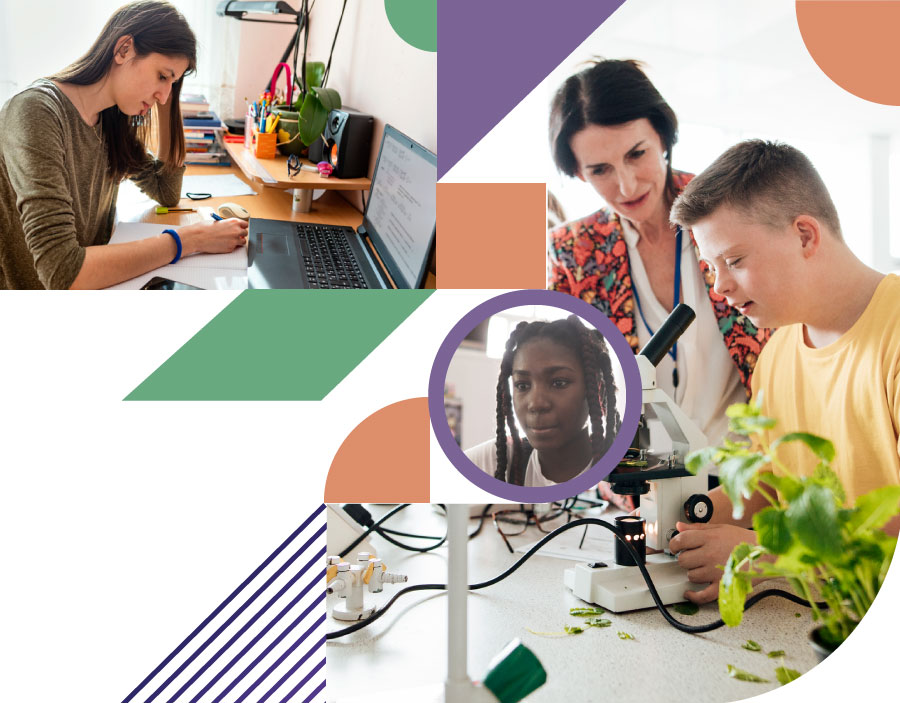
Transition Planning
Transition planning is used to describe the very intentional, organized and coordinated process of guiding young people with disabilities with education, experiences, supports and services to help them have successful and meaningful lives beyond high school. It is planning that begins with the end in mind.
Although transition planning and services are mandated for both education agencies (through IDEA) and vocational rehabilitation (VR) agencies (through the WIOA, Amendments to the Rehabilitation Act of 1973), schools and VR have different requirements and services that are designed to be provided in a complimentary way.
The focus of this section is on transition planning and services that schools provide.
While IDEA mandates specific documentation of transition planning and services in the Individualized Education Program (IEP) for students with disabilities ages 16 and older, the mandated age for transition planning and services is younger than 16 in many states and territories. The process is lifelong.
The U.S. Department of Education’s Office of Special Education Programs (OSEP) collects data from every state education agency regarding compliance with these mandates annually through the States’ Annual Performance Report for Part B – specifically Indicator 13. More information on this process can be found in the Data Analysis & Use resources on this website.
Explore resources and tools to guide the transition planning process on this site - encompassing assessment and skill development, high quality IEPs, case study examples, lesson plan starters, research-based practices to enhance academic, employment, and independent living skills to plan for success beyond school. Find resources related to critical areas of transition planning:
- Transition assessment
- Student engagement and self-determination
- Academic preparation
- Family engagement
- Career exploration and employment experience
- Preparing for postsecondary education and training
- Involvement of others including interagency collaboration
- High quality IEPs

Getting Started Resources
Key Resources
- Transition Education Birth to Adult (PDF)
- Side-by-Side View: Transition Services
- Moving from Assessment to Practice
- Summary of Performance
- Postsecondary Education and Training Preparation Toolkit
- I-13 Data Toolkit
- School Completion Toolkit
- Transition Fair Toolkit
- ABLE Youth Transition Toolkit
- The Role of Centers for Independent Living (CIL)
Training
Related Topics
Pre-Employment Transition Services
Training to begin exploring jobs and career interests through additional VR services and in collaboration with state and local education agencies to students with disabilities. Explore options on how to make available to all students with disabilities who need those services. More about Pre-Employment Transition Services.Community Engagement and Independent Living
Help youth navigate choices and opportunities to be more independent, consider living arrangements, build social connections, and practice self-advocacy skills to build self-determination. More about community supports and independent living.Employment
Competitive, integrated employment in a career area of one’s choice is an anticipated outcome for all students with disabilities. More about Employment.Career & Technical Education
Transition education and services should be grounded in quality research. To do so, practitioners need information on which practices and programs are effective for students and youth with disabilities. More about Effective Practices.Postsecondary Education
There are a multitude of education and training opportunities students and youth with disabilities can participate in after high school. These resources can help prepare them for different expectations in different education environments. More about postsecondary education.Interagency Collaboration
Best practices for interagency collaboration to increase opportunities for competitive, integrated employment for students and youth with disabilities. More about Interagency Collaboration.